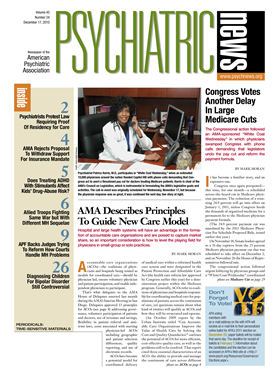Exposure to constant bright light at night seems to be a trigger for depression-like symptoms in mice, Randy Nelson, Ph.D., a professor and chair of neuroscience at Ohio State University, reported in the December 28, 2009, Behavioral Brain Research.
Now Nelson, Tracy Bedrosian, a doctoral student in neuroscience at Ohio State University, and their colleagues have found that exposure to even dim light at night appears to be capable of triggering depression-like symptoms in hamsters.
Bedrosian presented these new study data on November 17 at the annual meeting of the Society for Neuroscience in San Diego.
The study involved 16 female Siberian hamsters that had their ovaries removed to ensure that ovarian hormones would not interfere with the study's results. Half were housed in a standard light-dark cycle of 16 hours of light (at 150 lux) followed by eight hours of total darkness. The other half were exposed to a different light-dark cycle—16 hours of light (at 150 lux) followed by eight hours of dim light (5 lux), which was the equivalent of having a television on in a darkened room.
After eight weeks in their lighting condition, the animals were tested for depression-like behaviors.
The researchers used two tests for depression-like behaviors—the sucrose-intake test and Porsolt's swim test—that are used in basic research and in the preclinical testing of antidepressants by pharmaceutical companies.
In the sucrose-intake test, rodents are offered sugar water, which they usually like. If they do not show much interest in it, it is interpreted to be a sign of the anhedonia that depressed patients exhibit.
In the swim test, rodents are placed in a swim tank and observed to see whether they continue to search for an escape from the water or give up and just float on top of the water. If they give up, it is interpreted as a sign of the despair or helplessness that depressed patients often feel.
The hamsters exposed to dark nights enjoyed sugar water, whereas the hamsters exposed to dim-light nights enjoyed it less, suggesting that the dim-light hamsters were experiencing anhedonia. The hamsters exposed to dark nights did not give up in their search for an escape from water, whereas the hamsters exposed to dim-light nights did, suggesting that the dim-light hamsters were experiencing despair or helplessness.
In brief, it looked as if the dim light at night might have initiated depression in hamsters that had been exposed to it, the researchers concluded.
The researchers then compared the brains of the hamsters that had been exposed to dim-light nights with the brains of the hamsters that had been exposed to dark nights to gain some understanding of how the dim light might have actuated depression.
The hippocampi from the dim-light group had significantly fewer dendritic spines than those from the dark night group. Since the hippocampus is known to play a key role in depressive disorders, the researchers concluded that dim light might have reduced the number of dendritic spines in the hippocampus and thereby initiated the depression-like symptoms.
But how might dim light have brought about dendritic spine changes? The stress hormone cortisol didn't seem to be implicated since the researchers found no difference in cortisol levels between the two groups of hamsters. Their hypothesis is that the hormone melatonin might have been the culprit. They are planning to conduct further research to see whether that is the case.
Meanwhile, whether the results from these two animal studies hold implications for humans remains to be seen. “In seasonal affective disorder (SAD), people receive less light than normal due to the short day lengths,” Bedrosian told Psychiatric News. “Since we studied more light, not less, our work is not directly related to SAD. However, our findings do suggest that chronic exposure to light at night could be one contributor to depressive disorders unrelated to predispositions for SAD or other conditions.”
Regarding the question of whether people should avoid even night-lights to minimize the risk of getting night-light-initiated depression, Bedrosian had this to say: “We will need to do future work to understand how light at night affects mood in humans. However, if there is indeed a link, then perhaps people should minimize exposure to artificial light at nighttime. So, avoiding sleeping with a night-light, not falling asleep with the bedroom TV on all night long, and perhaps using dark curtains to block out street light might be a good idea. Exposure to light at night is unnatural and has only arisen in the past century, so minimizing exposure certainly can't hurt.”

